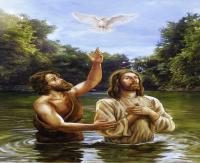
When St Ignatius Loyola was recovering from his wounds from the battle of Pamplona, he asked for light reading to pass the time, such as the romances of chivalry which told of heroes, ladies in distress and monsters. The castle, however, only possessed religious works, such as the Golden Legend (lives of the saints) and the Life of Christ. He began to read these and discovered that, while the tales of chivalry entertained him briefly, the Lives of Christ and the saints left him feeling refreshed and energised. The mood is the same in today’s gospel.
Mark’s gospel was the first to be written and he begins it by introducing Jesus at his baptism as “Jesus Christ, Son of God” (Mark 1:1). His account is succinct, but there is no doubt he is introducing a new chapter into the history of humanity and is quite clear about who Jesus is. He uses the term “good news”, which in the secular world might be the birth of an important person or the victory of a king in war but which the New Testament writers would use to signify salvation, liberation from sin, and returning to God. Isaiah, writing towards the end of the exile in Babylon, describes this in poetic terms using food and drink as symbols of divine nourishment. Divine gifts are given free. Water symbolises life, for without it everything would die. The psalm connects this with salvation.
Mark appropriately uses John the Baptist to present Jesus, emphasizing his identity by declaring that John was not worthy to undo the strap of his sandal (the task of a slave). Jesus had no need of baptism, but in doing so he was initiated into his public life by the manifestation of the Father and the Spirit, with the affirmation that he was the Beloved. We receive the same Spirit at our own baptism and become in a special way the beloved children of God.